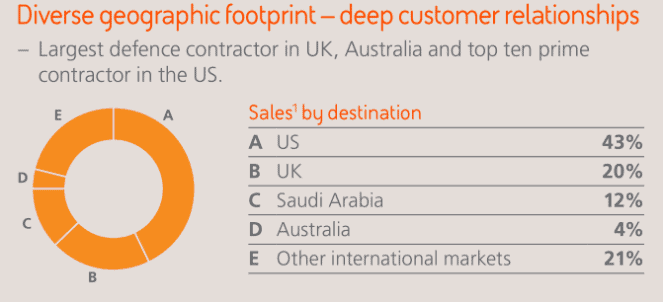BAE Systems (LSE: BA.) shares have been a rare beneficiary from the war in Ukraine. The arms, security, and aerospace company has seen demand skyrocket from government clients in the wake of Russian aggression.
So, what would I have today if I’d invested £1,000 in the defence stock half a decade ago?
Let’s explore.
Five-year return
Back in February 2018, the BAE share price stood at £5.58. As I write, the stock’s currently changing hands for £8.49. That’s an impressive 52% gain over five years.
With £1,000 to invest, I could have bought 179 BAE shares in 2018, leaving £1.18 as spare change.
Today, that shareholding would be worth £1,519.71, comfortably beating the return offered by the FTSE 100 index over the same time period by 41%!
On top of the capital growth, I could also add dividends to my total return. Assuming I didn’t reinvest the payouts into more shares, I’d have received £210.50 in passive income over the time frame.
Accordingly, my original £1k lump sum would have ballooned to a handsome total of £1,731.39 today.
The outlook for BAE shares today
Although the five-year return for BAE shareholders is eye-catching, it’s remarkable that the lion’s share of these gains have only been delivered since Russia’s invasion nearly a year ago. For four years prior to that the stock barely budged, eking out a meagre 3% rise.
The defence contractor was the FTSE 100’s top performing share in 2022. Naturally, this raises questions about whether such a stellar performance can be maintained.
The company has a solid track record when it comes to delivering passive income for its shareholders. It’s hiked dividend payments for 18 years, which makes it an excellent dividend stock over a long time frame — not just the last year.
The business has four key markets that account for 79% of its sales. Although its relationships are primarily with Western countries, Saudi Arabia is its third-largest client. This carries potential risks for the BAE share price.

I think it’s safe to say the defence goals of the US, UK, and Australia will remain harmonised for the foreseeable future. Whether that’s also true for Saudi Arabia is open to question. If relations broke down between the respective governments, there’s a concern BAE could come under pressure to abandon forecasted sales of up to 72 typhoon fighter jets to the Royal Saudi Air Force over the coming years.
That being said, the latest financial results were healthy. The company continues to add value for shareholders with a new three-year share buyback programme for up to £1.5bn. As long as the war in Ukraine continues, I think the firm stands to benefit from elevated geopolitical uncertainty.
Would I buy?
BAE shares’ past returns are undoubtedly impressive. However, I think I might have missed the boat on this stock. The share price jump following Russia’s invasion has pushed the price-to-earnings ratio to 19.71 today. I’m not sure there’s a lot of room for further capital gains from here.
The solid dividends are tempting, but I’m keeping BAE shares on my watchlist for now. I’ll consider buying the stock in the future when it looks cheaper.








